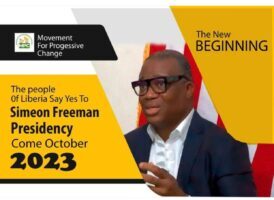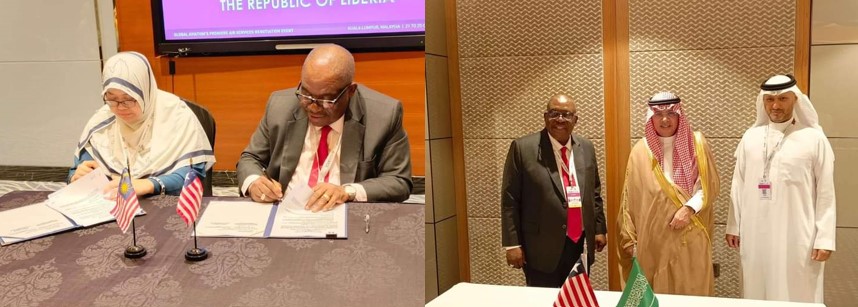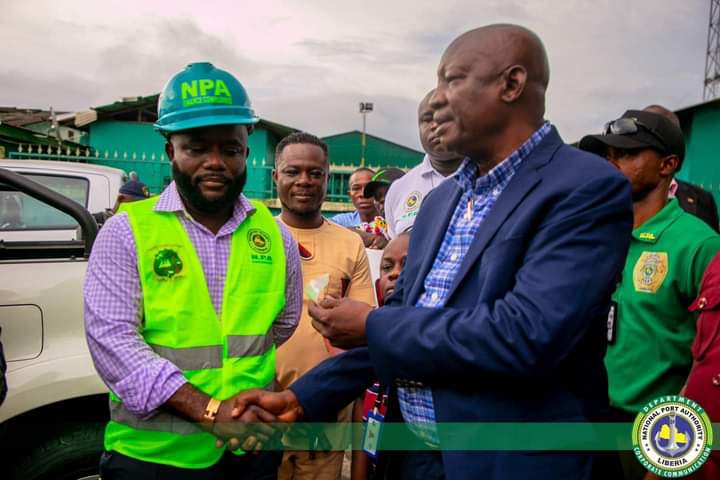Success! Final independent RCT results show LEAP equates to more than a year of additional learning for students
-
Ministry of Education expands LEAP to hundreds of schools
-
American researchers show government’s bold Public Private Partnership has significantly improved outcomes in impoverished communities by an additional year of learning
-
Path to financial sustainability positive as cost reduces to just $119 per child, a year
The Liberian Education Advancement Programme (LEAP) is a public private partnership with eight non state actors designed to improve school management in order to bring about improved learning outcomes for students across the government school system. In parallel, in 2016, the Ministry of Education commissioned a three year Randomised Control Trial (RCT) designed to study and measure whether LEAP did indeed improve outcomes. The RCT was conducted by the Center for Global Development (CGD) and Innovations Poverty Poverty (IPA). The Ministry’s ultimate vision is to transform learning for all 2,619 public primary schools across the country.
Overall, LEAP’s learning gains equated to more than a year of additional learning for Liberia’s public primary school children.
In 2016, 62% of primary school aged children were not enrolled in Liberia. Thirty-five per cent of women and 21% of men could not read a single sentence. LEAP had a singular goal, to improve learning outcomes for Liberian children. Uniquely, LEAP has thrived under two different administrations having being implemented as Partnership Schools for Liberia (PSL) under President Sirleaf and continued as LEAP under the leadership of President Weah. Strong political leadership and a clear focus on improving schools for Liberia’s children trumped the struggles signature policies often face with regime change.
In year one, the initial RCT results revealed that learning gains had increased by 60% in the programme overall. The metric that the Government wanted to measure, gave early indications that the programme could be very impactful. However, alongside a muted acknowledgement of improved learning, researchers raised concerns about the impact of government policy decisions and raised doubts about the long term financial sustainability of the programme. Three years on, the final RCT has been published and the results are startlingly positive for the fourth poorest country in the world.
To fully understand the learning outcomes detailed, it’s important to understand how the data was analysed by the researchers. The report analyzes learning outcomes of children by answering two distinct research questions. Intention-To-Treat (ITT) estimates the treatment effect of a child being assigned to a LEAP school in 2015-16. Treatment-On-Treated (TOT) estimates the treatment effect of a child having actually being taught at the school.
ITT includes all children originally included in the study irrespective of whether they whether they continued to attend a LEAP school, dropped out of school, or migrated with their families over the three-year period. The latter group (TOT) only includes those children that spent some time at a LEAP school. The Ministry wanted to measure learning outcomes for those who had a LEAP education as opposed to those who did not and so it makes sense that we look primarily at the outcomes of children who have benefited from attending a LEAP school. After all, using ITT data means including as many as two-thirds of children who were not or are no longer attending LEAP schools.
Using the TOT data, the RCT results for those children that attended a LEAP school show how it could be possible for successful LEAP providers at scale to prevent the generational transfer of poverty in Liberia. Overall, the LEAP programme increased learning by 0.26 standard deviations (SD’s) in English and 0.35 SD’s in maths; combined this equates to more than a year of additional learning. In Bridge-supported schools student learning increased by 0.62 SD’s; which is the equivalent of 2.5 years of additional learning. This means that children in Bridge-supported schools effectively achieved 5.5 years of schooling in just 3 years.
The improvement in learning outcomes are truly transformative. Stanford Economist, Eric Hanushek, believes that the long-term returns to educational improvement are significant. Mr. Hanushek estimates that even a reform plan that takes 20 years to improve by 0.5SD will increase GDP by 5% in 32 years. According to the RCT data, these LEAP students, especially if their education continues on the trajectory it is now, will radically improve the quality Liberia’s workforce and certainly bring about Hanushek’s projected gains in GDP.
To date LEAP is largely reliant on the support of philanthropists who are committed to seeing whether the LEAP model can be an exemplar for SDG4 by both improving learning outcomes and achieving financial sustainability. LEAP can only be successful in the long term if it can be delivered within the government budget. The RCT has taken the financial sustainability of the programme as one of the key metrics for success. Fortunately, the study shows that the cost of LEAP has substantially reduced over time as anticipated and is now being delivered for $119 per child a year; close to the government’s planned for education budget of $100 a child. As anticipated at the outset, the programme is well on the path to financial sustainability. This sustainability will be realised even more quickly when the originally intended scale is reached and progress in that regard is exciting. Following the evidence of improved learning gains the Ministry has expanded the program to reach 225 public primary schools in Year Four, benefitting tens of thousands more children.
The RCT has drawn much attention and its publication has been eagerly anticipated by a myriad of stakeholders; by the Government that seeks to make policy decisions based on the learning outcomes it evidences; by philanthropists keen to understand whether their support has enabled impact; by the global development community who are concerned that SDG4 will be unattainable without tested innovations that can deliver at speed and scale; by governments who are increasingly seeing education as the route to prosperity and growth; and of course by the providers themselves who have spent four years in some of Liberia’s most impoverished communities trying to give children a brighter future. That is a lot of pressure to sit on the shoulders on one RCT. Ultimately the question that everyone wants answered, is after all the work, funding and debate: Did LEAP significantly improve learning outcomes. The answer is, yes.






